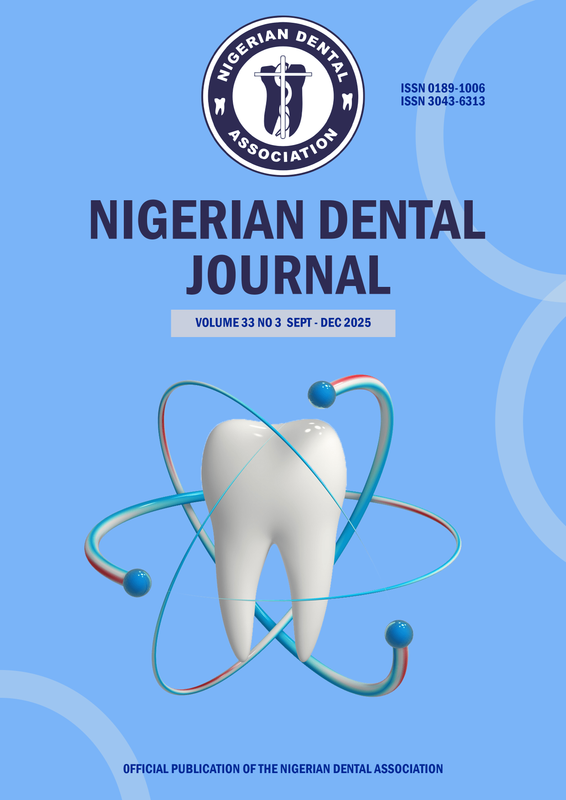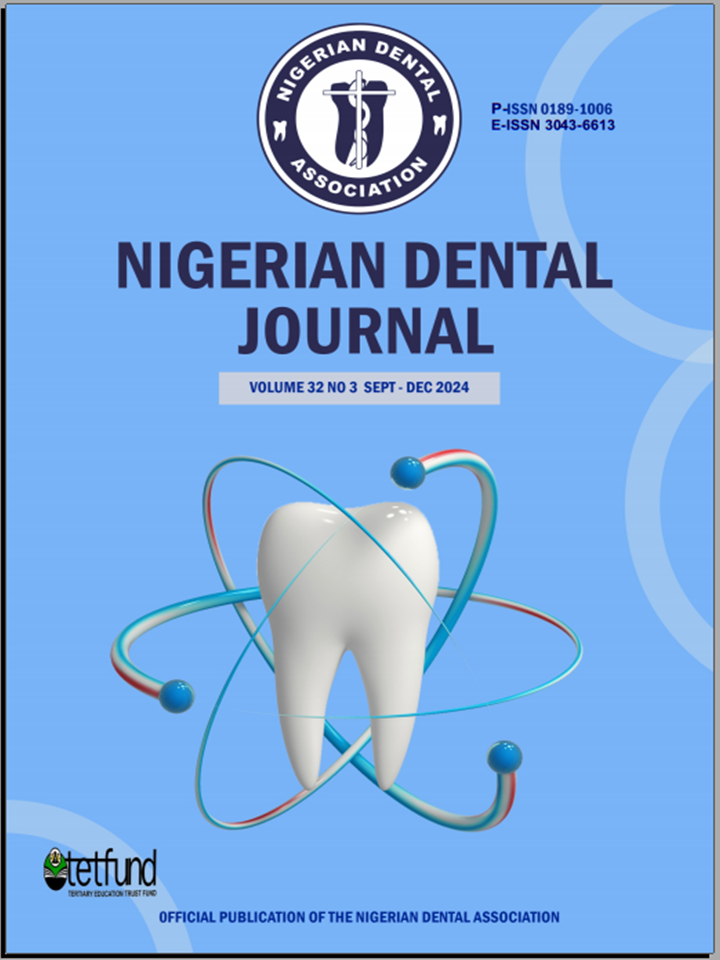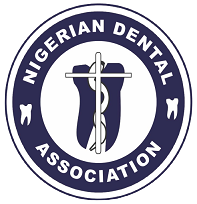Assessing Oral Hygiene Status of Children in an Urban Setting in Sub-Sahara Africa
Assessing oral hygiene status of children
DOI:
https://doi.org/10.61172/5d07vr73Keywords:
oral hygiene, tooth brushing, childrenAbstract
Objectives: This study assessed oral hygiene status of children in Enugu metropolis and its association with age, sex, tooth brushing tools, frequency of tooth brushing, and past dental visits.
Materials and methods: This was a secondary analysis of data. The primary study recruited children from primary schools in Enugu East Local Government Area in Enugu in 2020. Data on age, sex, level of education, tooth cleansing tools, frequency of brushing, dental visit, and oral hygiene status were collected. Data was analyzed using SPSS Version 25. Multivariate logistic regression for potential determinants of oral hygiene status of children was conducted. A model was developed to determine the potential determinants of oral hygiene status among children in Enugu metropolis. The effect of all significant factors on dental visit was inferred at P< 0.05.
Results: Children aged 5 to 12 years with mean age of 8.21±1.90 years participated in the study. There were 307 (48.3%) males and 329 (51.7%) female study participants. Many, 371 (58.3%), of the participants were aged 5-8 years and 540 (84.9%) had fair oral hygiene status. Males significantly had lower odds of having good oral hygiene (AOR: 0.154; CI: 0.035-0.687; P=0.014) when compared to the females.
Conclusion: Many children had fair oral hygiene and sex was a risk indicator of oral hygiene status among children in this population.
Downloads
References
Kidd E. Essentials of Dental Caries: The Disease and its Management. Prevention of Caries by Plaque Control. 3rd ed, pp71-84. Oxford University Press: Oxford. 2005.
Chestnutt IG, Schafer F, Jacobson AP, Stephen KW. The influence of tooth brushing frequency and post –brushing rinsing on caries experience in a clinical trial. Community Dent Oral Epidemiol 1998; 26(6): 406-411.
Batwala V, Mulogo EM, Arubaku W. Oral health status of school children in Mbarara, Uganda. Afr Health Sci 2007; 7(4):233-238.
Folayan MO, Mohammed RK, Onyejaka N, Popoola BO, Yewande IA. Preventive oral health practices of school pupils in southern Nigeria. BMC Oral Health 2014; 14
Agbaje HO, Kolawole KA, Folayan MO, Onyejaka N, Oziegbe EO, Oyedele TA et al. Digit sucking, age, gender and socioeconomic status as determinants of oral hygiene status and gingival health of children in suburban Nigeria. J Periodontol 2016; 87(9):1047-1056.
Lamont T, Worthington HV, Clarkson JE, Beirne PV. Routine scale and polish for periodontal health in adults. Cochrane Database Syst Rev 2018;12(12):CD004625. doi: 10.1002/14651858.CD004625.
Mello SMF, Correia de Araújo RP. Oral Health Status of Children in a Community in Northeastern Brazil. Pesquisa Brasileiraem Odontopediatria e Clínica Integrada [enlinea]. 2014, 14(1): 23-29.
Oyedele T A, Folayan MO, Chukwumah N M, Onyejaka NK. Social predictors of oral hygiene status in school children from suburban Nigeria. Braz Oral Res 2019,doi.org/10.1590/1807-3107bor-2019. 33.0022.
Akaji EA, Oredugba FA, Jeboda SO. Utilization of dental services among secondary school students in Lagos, Nigeria. Nig Dent J 2007; 15: 87-91.
Folayan MO, Oziegbe E, Oyedele T, Ola D. Factors limiting dental service utilization by pupils in a suburban town in Nigeria. Nig J Health Sci. 2013; 2:18–23.
Onyejaka NK, Folayan MO, Folaranmi N. Barriers and Facilitators of dental service utilization by children aged 8 to 11 years in Enugu State, Nigeria. BMC Health Serv 2016: 10.1186/s12913-016-1341-6
Ogunsile SE, Ojo I. oral hygiene status of adolescents in a Local Government Area of Oyo State Nigeria. J Sci Technol 2010; 30:81-86.
Ikimi NU, Morebise FM, Azeez A, Oludara BI, Alabi O, Olatunbosun WT et al. DMFT Index and OHI-S in children attending public schools in Abuja, Nigeria. Acta Sci Med Sci 2020; 4(5): 9-13.
Norton MR, Addy M. Chewing sticks versus toothbrushes in West Africa: A pilot study. Clin Prev Dent 1989; 11(3): 11-13.
Malik AS, Shaukat MS, Qureshi AA, Abdur R. Comparative effectiveness of chewing stick and toothbrush; a randomized clinical trial. N Am J Med Sci. 2014; 6(7): 333-337.
Osadolor OO, Iwuoha C. Oral hygiene status of primary school children. Int J Dentistry Res. 2020; doi:19.31254/dentistry.2019.4304
Akinyamoju CA, Dairo DM, Adeoye IA, Akinyamoju AO. Dental caries and oral hygiene status: Survey of schoolchildren in rural communities, Southwest Nigeria. Niger Postgrad Med J 2018; 25:239-245.
Adeniyi AA, Ogunbodede OO, Jeboda OS, Sofola OO. J Oral Hygiene 2009; 1(15): 64-70.
Agbelusi GA, Jeboda SO, Oral hygiene Status of 12 year old Nigerian children. West Afr J Med 25:195-198.
van der Hoeven M, Kruger A, Greeff M. Differences in health care seeking behaviour between rural and urban communities in South Africa. Int J Equity Health 2012; 11:31. doi:10.1186/1475-9276-11-31
Enugu State Annual Education Sector Performance Report, 2010. www.esspin.org › reports › download › 236-file-Enugu-Annual-Educ..Available from: <236 file Enugu Annual Education Sector Performance Report 2010.pdf>. [Last accessed on 2022 Jul].
Greene JC, Vermillion JR. The simplified oral hygiene index. J Am Dent Assoc 1964; 68: 7-13.
Onyejaka NK, Olatosi OO, Ndukwe NA, Amobi EO, Okoye LO, Nwamba NP. Prevalence and associated factors of dental caries among primary school children in South-East Nigeria. Niger J Clin Pract 2021; 24:1300-1306
Araoye MO. Research methodology with statistics for health and social sciences. Nathadex Publisher, Ilorin, 2004.
American Academy of Pediatric Dentistry. Fast facts 2014, www.aapd.org/assets/1/7/fastfacts.pdf. Accessed 18th May, 2022
Azodo CC, Unamatokpa B. Gender difference in oral health perception and practices amongmedical house officers. Russian Open Medical Journal. 2012 : 1 :0208
Mamai-Homata E, Koletsi -Kounari H, Margaritis V. Gender differences in oral health status and behavior of Greek dental students: A meta-analysis of 1981, 2000, and 2010 data. J Int Soc Prev Community Dent 2016; 6(1):60-68.
Shivanand Gudal Soumya, Kukalli Kamalaks harappa Shashibhushan, et al. Evaluation of oral health status among 5-15 year old school children in Shimoga city, Karnataka. India: A cross sectional study. J of Clinical and Diagnostic Research
Jipa IT, Amaeri CI. Oral health status of children aged 6-12 years from the Danube delta biosphere reserve. Oral health and Dental Management, 2012; 11(1):39-45.
Malik AS, Shaukat MS, Qureshi AA, Abdur R. Comparative effectiveness of chewing stick and toothbrush; a randomized clinical trial. N Am J Med Sci. 2014; 6(7): 333-337.
Avenetti D, Lee HH, Pugach O, Rosales G, Sandoval A, Martin M. Toothbrushing behaviours and fluoridated toothpaste use among children younger than three years old in Chicago. J Dent Child 2020; 87(1): 31-38
De palma P, Ibrahim AA, Bambaei C, Tessma MK. Is there an association between self-reported dental visits, tooth brushing, fluoride use and perceived oral health status? J Oral Hyg Health 4 :206.doi :10.4172/2332-0702.1000206.
Downloads
Published
Issue
Section
License
Copyright (c) 2024 Nneka ONYEJAKA, Emmanuel Onyebuchi AMOBI, Nkechi Anne NDUKWE, Njideka Patricia NWAMBA

This work is licensed under a Creative Commons Attribution 4.0 International License.
Open Access Statement
- We became fully Open Access since January 2023.
- Our new and archived materials are available free of charge on open basis and under a Creative Commons license as stated below.
Copyright statement
Copyright © 1999 The authors. This work, Nigerian Dental Journal by Nigerian Dental Association is licensed under Creative Commons Attribution 4.0 International License.


